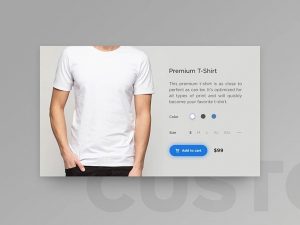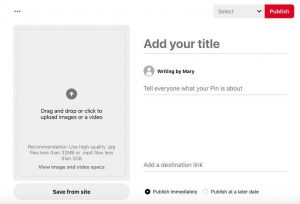
paulbr75 / Pixabay
Part 2: What Is The Perfect Marketing Strategy For Your Business? – Part 2 – Mining Your Sales Data
That’s essentially the difference between what happens on social media and what happens on your website. Social media is filled with singles. You can garner attention, you can do all kinds of different stuff. But getting people to leave social media is hard, because they want to stay in that sandbox and play. So ultimately what you have to do is use things like social media to get people back to your home base. That should be your goal. But it gets harder and harder, especially nowadays with the way algorithms are; fewer people are seeing things on your business page, and more and more people are engaging on the personal side. We’ll cover that more later, but let’s talk about scoring some runs.
Your Home Base
In my world, the home base is your website. Your website is the place where transactions happen. It’s where you build your brand. It’s where your customers end up. I’ve done a couple of different podcasts about the perfect website. There’s at least five pages that you need:
- The homepage.
- The About page. Who are you? Why should people pay attention?
- The products and/or services you offer.
- Testimonials.
- Contact us, which is what a lot of people consider to be their ultimate call to action. And that’s to get people to fill out a form. Obviously, there are a lot of other things you can get people to do, but if you can’t get them to fill out the form, maybe you can get them to pick up the phone. If you can’t get them to pick up the phone, maybe you can add them to your email list with some kind of premium offer or some kind of freemium or giveaway, or whatever it is.
Now, when we sit down and look at analytics, which we will dig into a little later, you’ll notice that your homepage is going to get over 50% of the traffic, and that’s okay. What happens is, a lot of people start designing websites, and they spend so much time trying to make the perfect, most beautiful homepage ever. Then they’ll go in and start filling in the gaps.
I want you to start thinking a little bit differently. Instead of starting with the homepage, start with your products and services pages. That should be the most important piece of your website, of your marketing messages. Here’s the deal: those pages answer questions. When people are searching the internet, normally they’re doing it in a way that they’re asking a question. They’re saying, “I have a problem. How do I find the solution to it?” Now if your website has the answer to those problems, then you might be the place where they end up doing business.
Defining Your Audience’s Needs
Think of it this way, and let me give you an example. I have a client that’s a lawyer. They could just say they’re a lawyer, but some people need family law, some people need child custody law. Some people need divorce help. Some people need financial help. Some people need to set up a corporation. What they have is a page, and even on top of that, they have multiple websites specific to each one of those areas of law. So they actually have one for family law, for general law, for bankruptcy, for financial planning, and they have another one that they use to attract customers in a specific town. We’ll get into that some other time. But the bottom line is, when you get into a website, it’s talking specifically about the thing that person is looking for. Yes, you can have a website with all of those options. But the problem is, if you make people search too hard to find what they’re looking for, they’ll get confused and they’ll give up. They won’t spend a lot of time looking.

So ultimately what we’re trying to do is this. Let’s say that somebody has a child custody issue. Or let’s say they’re looking for help with their pets. Or they’re looking for help with their own physical rehab, whatever it is. Each webpage that’s a product or service needs to do this — first and foremost, it has to define what is the problem, what are the symptoms of the problem? So for example, with child custody: “My husband or my wife is trying to gain control and I want control. I want visitation.” With your horse, it’s having ligament problems in its leg. With your knee, you’re having a knee operation and you need to rehab. Whatever that specific thing is.
Target Pages Per Solution
Now we break it down even further. When you’re doing that knee operation, is it a knee replacement? Is it something called “manipulation under anesthesia?” What is the specific thing that they’re looking for? Chances are they’re going to drill down that much. So define the problem, talk about the symptoms. “You may have a need for manipulation under anesthesia if your leg doesn’t move, your range of motion isn’t good,” so on and so forth. The next thing you have to do is define what caused that problem. What you’re trying to do in that case is make an emotional connection with them. In other words, you’re empathetic to who they are and what they’re trying to accomplish.
The next thing your page should do is offer them the solution, your solution. The cause of the problem is, “You didn’t do the right kind of rehab, so we have a machine that’s going to help you incrementally move your leg further and further, so that you can avoid having another operation.” And ultimately, you want that call-to-action, which is to pick up the phone, fill out the form, follow us on Facebook, whatever it is that you want them to do. Blogs are a great way to get across small sub-segments of that. So let’s just say, what is MUA? Let’s say you don’t want to put all that information on a page, because it’s way too complex. What is manipulation under anesthesia? So you can sit down and write a blog defining that specific thing. Then you can use that blog to either give them a deep dive or do something quick and specific.
But ultimately, you want to have a call-to-action, and that call-to-action is, go visit the webpage that talks specifically about that. So dig in for more research. Find out more about it. Let’s look at the problem, the symptoms, the solution, and then have a call-to-action in there.
So, that’s what your website should be. It should be a series of well-defined landing pages. From there, once you have that, you can go back and build the homepage to say, “If you have this, go to this page. If you have this, go to this page.” And you can change those out based on the traffic that you’re getting on each one of the pages.
Final Thoughts
Think of your website one of two ways. Either you need to give it a facelift, or you need to build a whole new site. So look at your site, map out what’s needed, act on it, and give that site the information that’s going to drive traffic to it and create sales.
I would love to hear your thoughts on this. Comment below and share your thoughts, ideas or questions about showing the concepts presented. Have you had to overcome any of the presented concepts? What worked and what did not live up to expectations? Do you have any ideas or advice you could share?
(57)







